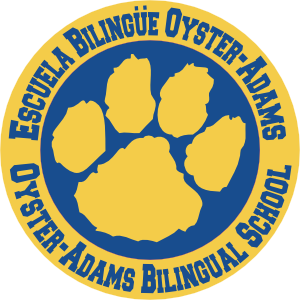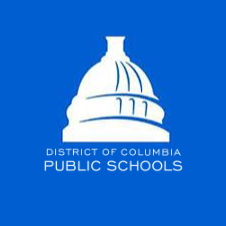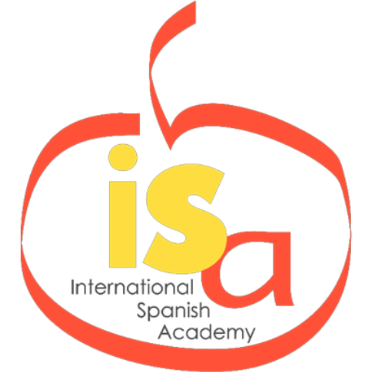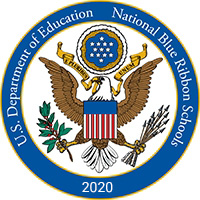Oyster Campus
Policies and Procedures
Attendance
Attendance is one of the key metrics that schools review as part of our whole child, anti-racist approach. Attendance patterns provide key insight into experiences that may be impacting other domains of development for the child. In the District of Columbia, education is compulsory for ages 5-17. Therefore, students must meet the attendance requirements described in the Attendance Policy. Students must be present 80% of the school day to be counted as “legally present.”
Procedures for Absences
A written note must be provided to the school by the student’s parent or guardian prior to an absence or within five (5) school days after the student’s return to school in order for an absence to be excused. Written notes may be submitted via email to Oyster attendance ([email protected]), Carmelita Naves, OA attendance coordinator ([email protected]), and the student’s teachers. Upon receipt of appropriate notification and additional documentation where necessary within the five-school day period, Oyster attendance coordinator must update absences as excused within 48 hours. All written notes must be dated, include the reason for the absence, and specify the dates the student was or will be out of school. Absences for any of the reasons listed below are excused absences. Absences of five (5) or more consecutive days for any reason require additional documentation in order to be excused.
The following absences are excused:
- Illness (a doctor’s note is required for a student absent five or more consecutive days);
- Medical or dental appointments;
- Death in the student’s immediate family;
- Exclusion by direction of the authorities of the District of Columbia, due to quarantine, contagious disease, infection, infestation, or other condition requiring separation from other students for medical or health reasons;
- Court;
- Religious holiday;
- An emergency approved by DCPS;
- Take Our Children to Work Day;
- School suspension;
- Temporary closing of facilities or suspension of classes due to severe weather, malfunctioning equipment, or emergency requiring a school closing or suspension of classes; and
- Failure of the District of Columbia to provide transportation in cases where the District of Columbia has a legal responsibility for the transportation of the student.
NOTE:
- If a student or parent anticipates an absence not covered by the excused absences listed above, they may submit a request for an excused absence due to a special circumstance to the school principal.
- For a total of up to four (4) cumulative days in each term, a parent’s written excuse is sufficient for explaining the absence. Such absence will be excused if it falls under one of the excused absence reasons noted above;
- For five (5) or more cumulative days per term, further, documentation is required to excuse the absence. A written explanation of the student’s absence, or the student’s child’s absence, must be submitted by a doctor or staff of a relevant agency, on official doctor’s office/agency letterhead and signed by a relevant official.
- Medical or dental absences: Written explanation of the student’s absence must be submitted by a doctor or staff of a relevant agency on official doctor/dentist office letterhead and signed by a relevant official;
- Judicial proceedings: A student’s required presence at judicial proceedings must be established by a document from the court stating the need for the student’s presence on all the relevant dates; and
- Death in the student’s immediate family: Funeral programs may be accepted as appropriate documentation.
- Students required to quarantine at the direction of DCPS (e.g., because they tested positive for COVID-19) do not need to provide documentation.
Recording Student Attendance
Student attendance will be recorded in Aspen by the student’s teacher by 8:55 am. Teachers use ASPEN to mark attendance. Attendance must be entered by 8:55 AM (except for 3rd grade where attendance will be taken by paper and will be entered by 3rd grade teachers at 10 am). Marking attendance on time is a school/district expectation. If a teacher has questions about how to use ASPEN, username and password, please contact Evelyn Viera at [email protected]Tardy to School Policy
The OA school family prides itself on quality and rigorous instruction; therefore, we insist that all students be on time. Student arrival time is from 8:10 am - 8:40 am (except students who attend before care). Instruction starts by 8:45 am.Fire Drills and Other Emergency Procedures
Every faculty member is responsible to familiarize their students with these procedures. All building evacuation procedures require the teacher to follow the directions:
- Fire Drill
- Lockdown drill: teachers will keep students inside classrooms and out of sight with the doors locked
(lights off, lock door, quiet classroom, cover window, and flip chart book under the door) • Great Shakeout (Earthquake Drill) - DCPS is committed to ensuring the safety of all students and staff. We conduct monthly fire drills and an additional drill for a different category.
Student Discipline
Oyster-Adams expects high levels of courtesy, kindness, and respect from all students. The Oyster-Adams Core Community Actions and our understanding of brain-body states (Conscious Discipline) are the guiding principles for student behavior and discipline.
Discipline is viewed as a positive educational process in which students learn self -control and the proper balance between one’s own personality and group interests. All Oyster-Adams educators and staff exercise a positive approach to discipline and student discipline as an opportunity to teach the missing social skills and develop responsibility for their actions by the use of logical consequences.
We promote a culture of kindness and compassion through the implementation of counseling lessons that are provided in small groups, one-on-one, and whole groups from PreK to 3rd grade. Our entire School Family teaches our children how to respond to bullying, the role of bullies, victims, and upstanders. We ensure every child feels loved, valued, and develops a sense of belonging. Our motto is “my job is to keep you safe.”
We work diligently in the prevention of bullying behaviors (assault, intimidation, or abuse). Bullying is defined as any deliberate and repeated act that includes verbal, physical or psychological threat towards any person. Bullying or abuse is aggressive behavior that includes an imbalance of power and strength in a relationship. This behavior can manifest itself in ways such as: calling names, insulting, hitting or kicking, among others. Other types of aggression are manifested in the manipulation of friendship and the deliberate exclusion of the child from school activities and games.
At Oyster-Adams Bilingual School, we are committed to the establishment of a culture of kindness and compassion and the four community actions: Act with integrity, Live gracefully, Lead by example, and Think globally. In our School Family, there is no place for aggression, intimidation, or abuse.
Any act of intimidation, aggression, or abuse will be treated with the utmost seriousness and may result in the suspension of the student. The administration and Student Growth Team will respond to any incident of bullying or abuse. A log of the incident will be kept on file and parents will be contacted, either by phone or calling a meeting. In accordance with Chapter 25 of the District of Columbia Department of Education’s (DCPS) Discipline Plan, the administration will determine and impose on the aggressor the appropriate consequences, depending on the offense. The Student Growth Team (SGT) works with both the victim and the aggressor to dispel and eliminate aggressive behavior and ensure that there is an environment of safety and trust for all.
The role of parents is to talk to their children about classroom commitments and school expectations. Please ask your child’s teacher about the classroom commitments and encourage your child to use them at home. The wonderful job of sending us their children with a firm foundation of respect for others and responsibility for our actions (verbally or physically). We sincerely hope that we can continue to have this collaboration between parents and educators, and to be informed of any behaviors of concern. All information will be kept confidential. Please email AP Berrocal-Phillips, [email protected] or any member of the SGT for assistance, [email protected], [email protected], [email protected], [email protected]
What is Safe Play? Conflict?
The Student Growth Team wants to work together to develop the social skills that are needed to have fun and enjoy recess with peers through healthy physical interactions. We encourage parents to talk with their children about the importance of safe play at recess.
What does safe play look like/sound like? What games are safe and what games are unsafe? Safe play is demonstrated through playing games that are fun and where students use gentle touches when tagging someone for example. Unsafe play is too rough and makes others feel uncomfortable. Some examples of unsafe play are wrestling, pushing, and play “fighting.”
Parents, please remind students of the social expectations of playing safely during recess. Students should keep their hands to themselves. Also, students should use their big voice when they feel uncomfortable or ask an adult when they need help or feel someone is playing too rough**.** Examples of using a big voice are “I do not like when you push me, next time ask me to walk faster.”
We are looking forward to partnering with you on teaching our children safe ways to be together and have fun during recess. We appreciate your support at home and hope you spend some time reflecting and reinforcing on what we teach at school during counseling lessons. The SGT, Erin Druelinger (counselor), and Carmelita Naves (social worker) deliver a lesson to every classroom from PreK to 3rd grade to specifically introduce the ideas of big voice, safe and unsafe touches, and time machine as well as knowing when and who to talk to if children need help. Students participate in an interactive lesson to apply their understanding of “saying no to touches they might not want, or no to rough touches that hurt others.” They also introduce children to some of the trusted adults at home and at school. The trusted adults are teachers, the counselor/social worker, assistant principal, parents, grandparents, and family friends. Please reach out to SGT if you have any questions.
As a school, we choose to see conflict as a call for help and a teaching opportunity. You’ll be able to discern the communication embedded in the child’s behavior and solve the problem by teaching new skills. When children are triggered by conflict, we teach a new socio emotional skill they will need for the rest of their lives.
From this perspective, we see a call for help and a seed of potential in children who are hurtful to themselves and others. Love is our most essential, most effective tool for reaching oppositional, defiant children (and adults) who exhibit challenging or aggressive behaviors. To change challenging behaviors, challenging children need someone to see them differently. They need someone to look at them and see a seed of potential.
We believe in every child! An example is to say, “You wanted ___________” or “You were hoping ______________.” Say, “You wanted your friend to move.” This statement acknowledges the child’s needs without labeling the child as bad. We now have the opportunity to teach. When we teach the new socio emotional skill we say, “When you want your friend to move, say, ‘Excuse me.” This teaches the child a new skill and an acceptable, healthy way to meet her/his needs.
Also, our main priority is to ensure the safety of every child. This belief makes us, teachers, counselor, social worker, and assistant principal, take the safety of all students very seriously and follow DCPS guidelines regarding discipline. Based on Chapter 25 (DCPS Student Discipline Policy) any misconduct that represents 2.9 Inappropriate or disruptive physical contact between students will result in the following consequences:
Tier 1 – in the 1st incident the student was involved, the following school day the student is going to switch recess/lunch and have it with a different grade level. Parents will receive a phone call from the teacher.
Tier 2 – if a student is involved in a 2nd incident, student will be “in school disciplinary action”. Student is removed from class and spends the day working under the supervision of the Student Growth Team. Parents will receive a phone call or email from SGT.
Tier 3 – If a student is involved in a 3rd incident, the student will be suspended. Parents will receive a phone call or email from AP Berrocal.
Student Behavior Discipline Policy (Chapter 25)
At DCPS, the commitment to holistic student development extends beyond academics, emphasizing social and emotional learning through inclusive and supportive environments. This dedication has led to legislative action, such as the Student Fair Access to School Act of 2018, restricting out-of-school suspensions, and the creation of the DCPS Student Behavior Task Force in 2019-2020 to foster safe and nurturing learning experiences. Read more about Disciplinary Responses to Student Behavior DCPS Student Discipline Policy, DCMR Chapter 25Field Trip Protocol
We launched the DCPS Field Trip QuickBase Application last school year. All field trip applications for trips must be entered via the Field Trip QuickBase app. Every field trip should be approved by the Principal before any student leaves the school grounds. Teachers are responsible for completing and submitting the field trip application in advance to get the required approval prior to the field trip.
On the other hand, to make our field trips as successful as possible, the following field trip protocol is a schoolwide expectation that makes us accountable for every child and ensures their safety. The implementation of this protocol is expected for all field trips:
Before
Submit field trip application via Field Trip QuickBase app to the administration to be approved at least 4 weeks before the day of the trip.
Inform the nurse at least 14 days (two weeks) before the day of the trip. The nurse should prepare medication packets and reach families in advance. An AOM will be assigned to each field trip, and he/she will provide the medication.
If you have students in your class with an IEP who will be participating in a field trip, please inform the case manager (SPED Teacher) and Mr. Melmed about the field trip with at least 48 hours notice via email. The case manager and Mr. Jonathan Melmed (LEA) will then determine if it is necessary for one of them (or another staff member) to chaperone the field trip.
Invite parents to chaperone the field trip. Here is a suggested language you can use when inviting parents:
"Our class will be taking a field trip on X. We would greatly appreciate your participation as a chaperone. We believe that your participation will ensure your child’s comfort so that s/he can get the most out of the field trip. It is also a wonderful opportunity for you to meet and interact with your child’s friends and teachers and gain a better understanding of his/her school community.
Thank you very much! Sincerely ,
_Mr./Ms. XX"Design an outline (i.e., time of departure, metro station, lunchtime; etc..); include time and specific activities; share it with chaperones, co-teacher, and supporting staff.
During
- Assign specific students to each chaperone to balance the number of students vs. chaperones. Explain the role of the chaperone via email to parents so they become active chaperones and support children as expected.
- Exchange phone numbers between ALL teachers and chaperones. This is for field trip emergency purposes only.
- Count every student before the field trip, count during the field trip, and count at the end; be sure that all students are present.
- If two teachers participate in the field trip, each must lead a group.
In case of an EMERGENCY, you must contact: AP Berrocal-Phillips (202) 870-1278 or social worker Carmelita Naves (240) 393-8086.
Safe Recess Protocol
The goal is to ensure every student participates in a safe recess environment. It is key that all staff on duty implement the following protocol that was developed by Oyster-Adams teachers and ALT team members.
Teacher/Staff Expectations
- Have a whistle:
two short blasts = alert
one long blast = line up - Model calm behaviors and avoid screaming or speaking loudly (use breathing techniques).
- Walk the playground and interact with students.
- Monitor students at all times (please avoid being on your cell phones).
- Supervise children at all times. Please monitor and intervene before a conflict
escalates. We supervise closely any student who needs socio-emotional support. We know the needs of our children and we respond with care and support. If you need to change your location from the lower to upper level on the playground, please ask a colleague to switch with you so we keep the proper number of staff on each level. - Encourage students to use Big Voice and Time Machine to solve conflicts. We model STAR, Noticing, and DNA.
- Mr. Adolfo Hernandez (PE teacher) provides safe tools: foam blocks, ropes and balls. Please encourage students to play safely.
- One person stays on the playground to ensure that all of the students have returned to the building.
- Teachers/Specialists MUST be on time to pick up your students when recess is over. When students arrive in class, be sure that everyone is with you. Count them and check with the main office if a student is absent or sick with the nurse. We are accountable for all children.
- Recess bags: A recess bag holding nurse slips, incident slips, Band-Aids, and pencils are placed at the 2nd floor door and the cafeteria door. One person should take them out and replace them when their duty is over.
- No Go Zones: blacktop gate, outside of playground/blacktop (if a ball rolls away) These zones should be frequently monitored at all times during recess.
MOST IMPORTANTLY: Always make sure a teacher’s duty is covered if a teacher is going to be absent, please ask your colleagues to cover your duty. Please respect your colleagues’ time and be present on time. If a colleague tends to be late, please have a conversation with your colleague. If we want students to develop assertive voices, we must cultivate assertive voices among us.
Lunchroom Expectations & Protocol
- Teachers develop a seating chart the first week of school and place it on the cafeteria board as a reference. Teachers eat with their students the first two weeks of school at least three days of the week.
- Students are to be walked all the way to the cafeteria by their teacher.
- A teacher/staff member who supervises the cafeteria monitors the 1st floor bathrooms during lunch times.
- Practice Two Positive Choices: “You may enjoy your lunch and then talk quietly with a friend” or “You may talk quietly with your friends during lunch.” You may not talk loudly or yell while at lunch.”
- Practice Parroting Technique:
- Take a deep breath and become conscious of your current thoughts.
- Once you are in control of yourself, recognize that your child will choose to operate within your framework, or not.
- Repeat the options you have presented in a calm, assertive voice (Parroting Technique)
- Students are not allowed to leave the cafeteria for any reason without approval from the lunch monitor.
- Students must remain in their seats during lunch and maintain their voices at a conversational volume level (level 1) while in the cafeteria.
- One person helps with the lunch line (getting food to students) and circulates round during lunch, and then helps collect trash (5 minutes before lunchtime is over)
- Posted duty schedule in cafeteria and outside.
- Chants and Connections: Practice Daily with Fidelity
If you can hear me clap once (leading teacher clap one time). If you can hear me clap twice (leading teacher clap two times). If you can hear me clap once (leading teacher clap one time).
Boom Tiger Boom
I Said A Boom Tiger Boom!
leader says and others repeat
I Said A Boom Tiger Boom!
leader says and others repeat
I Said A Boom Tiger Rocks Tiger Rocks Tiger Boom!
repeat
U-HUH
repeat
OH-YEA
repeat
WOO-HOO
repeat
GO-GO
repeat
One More Time
repeat
One person on the microphone will say: "1-2-3 eyes on me" and kids respond: "1-2 eyes on you" (this person circulates during lunch).
Vamos Tigres (PK - Kindergarten)
Vamos Tigres
leader says and others repeat
Vamos Tigres
leader says and others repeat
Vamos Tigres
leader says and others repeat
School lunch line
- Single line
- Voice level 1
- We use helpful hands and walking feet
If students “Need Help”
- Stay seated
- Raise your hand for help
- Raise hand with sign (water and bathroom silent language sign)
Eating time
- Bottom on the seat, legs under the table
- Talk only with your table mates
- Eat your food, respect your friend’s food
Students must leave the cafeteria just as they found it before they leave (chairs tucked beneath the tables, trash off the tables and in the trash can, and tables wiped clean). Custodians move 2 trash cans during cleanup, and the teacher/partner teacher moves the other.






